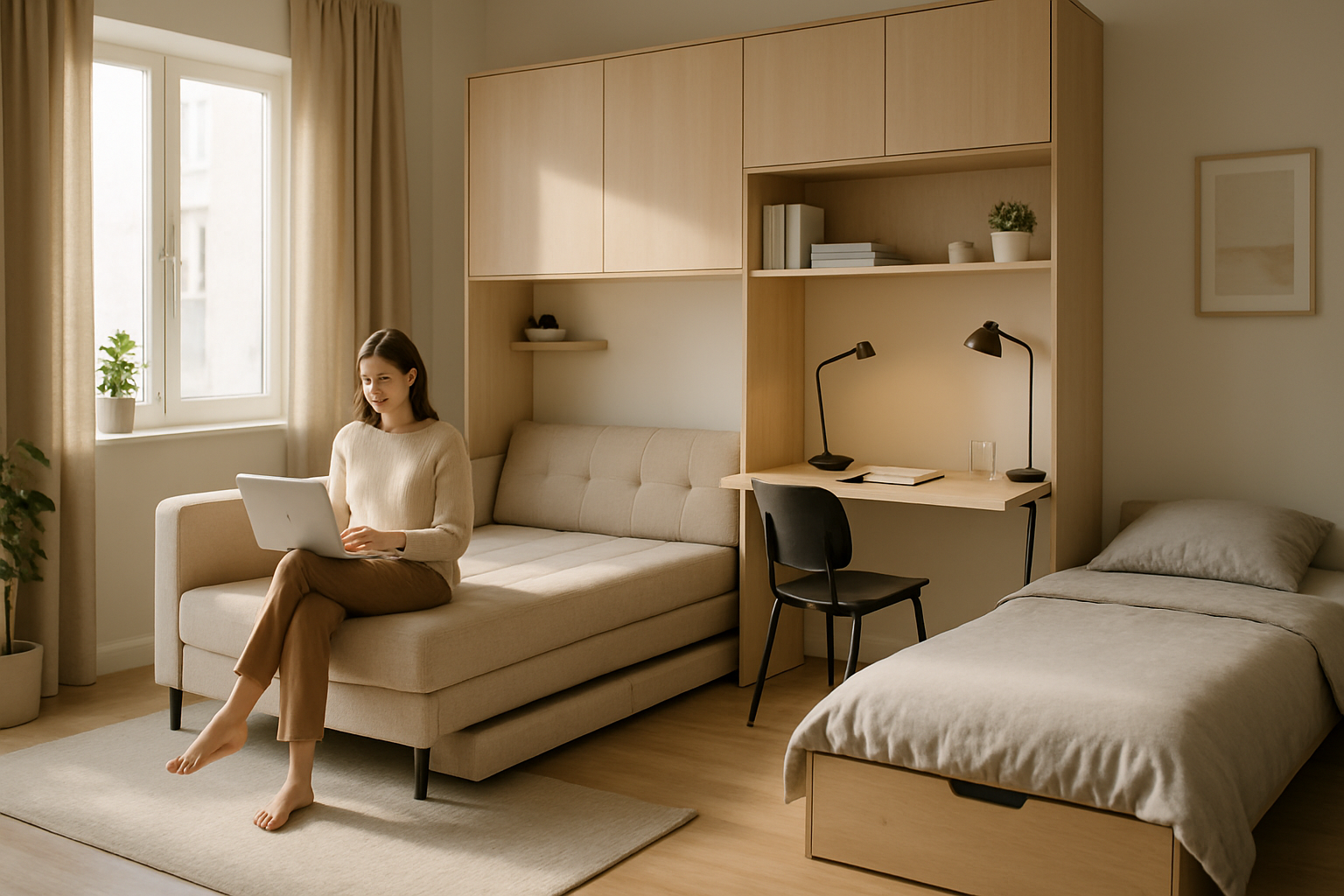Room Divider Ideas for Flexible Living Spaces
A room divider can change how you use space without major renovation. Whether you live in a compact apartment, need a designated corner for a home office, or want to refresh interior design, a divider creates boundaries, improves sightlines, and can add storage or style. This article explains what room dividers are, how they relate to interior design goals, practical choices for small space living, considerations for apartments, and ways to configure them for a home office. The guidance focuses on durable, reversible, and visually compatible options that work across varied budgets and living situations.

What is a room divider?
A room divider is any element—physical or visual—that separates an area into distinct zones. Common types include folding screens, shelving units, curtains, sliding panels, glass partitions, and freestanding walls. Beyond separation, dividers influence light, sound, and movement: open shelving keeps a sense of flow while opaque panels increase privacy. Think of a room divider as a tool for organizing activities (sleeping, working, dining), defining circulation paths, and introducing new textures or colors into a room without altering its footprint.
How do room dividers fit interior design?
Room dividers are design elements as much as functional devices. They contribute to scale, proportion, and focal points—adding vertical interest that draws the eye and balances furniture arrangements. Materials (wood, metal, fabric, glass) set the tone: warm wood and rattan read cozy and organic; glass or acrylic looks modern and preserves light; metal can feel industrial. Coordinating finishes with existing furniture and color palettes helps a divider feel intentional rather than an afterthought. Also consider patterns and transparency: a patterned screen can be an accent, while translucent panels create partial separation without making spaces feel closed-in.
Which room dividers work in a small space?
Small spaces benefit from lightweight, multifunctional dividers. Open shelving units provide storage and act as a visual barrier without blocking light. Foldable screens or curtains are easy to tuck away when you need a more open plan. Sliding panels or loft-style rails maximize usable square footage compared with hinged doors. When choosing a divider for a small space, prioritize slim profiles, vertical storage, and translucency to avoid making the room feel smaller. Pay attention to scale—oversized pieces overwhelm; narrow, tall solutions preserve sightlines and allow furniture to be arranged for flow.
Choosing a room divider for an apartment
Apartment living often involves landlord restrictions and limited installation possibilities, so opt for non-permanent solutions. Tension rods with curtains, freestanding screens, and modular shelving that stands on its own are apartment-friendly. If drilling is allowed, consider track-mounted panels that can be removed later. Also check building rules about fire safety and egress—avoid blocking exits or ventilation. For renters wanting more privacy, translucent film on existing glass or a lightweight accordion divider can be effective. Always measure ceiling height and doorways before purchasing to ensure the divider fits and complies with rental terms.
Using a room divider in a home office
Creating a distinct home office within a shared room benefits from acoustic and visual separation. A room divider placed behind a desk defines the workspace and reduces background distraction on video calls. Choose dividers with integrated storage to keep office supplies organized and out of sight. For improved acoustics, consider fabric panels, bookcases filled with books and soft objects, or acoustic screens rated for sound absorption. Lighting is important: ensure the divider doesn’t cast unwanted shadows on your work area and allow natural light when possible. Mobility helps—wheeled partitions let you reconfigure the workspace based on task or time of day.
Conclusion
Room dividers offer flexible solutions to balance privacy, function, and aesthetic needs across homes, apartments, and small spaces. Selecting the right type involves considering light, scale, permanence, and any building restrictions. With options ranging from simple curtains and folding screens to shelving and sliding panels, a thoughtfully chosen room divider can improve organization, support a home office, and enhance interior design without major construction.






